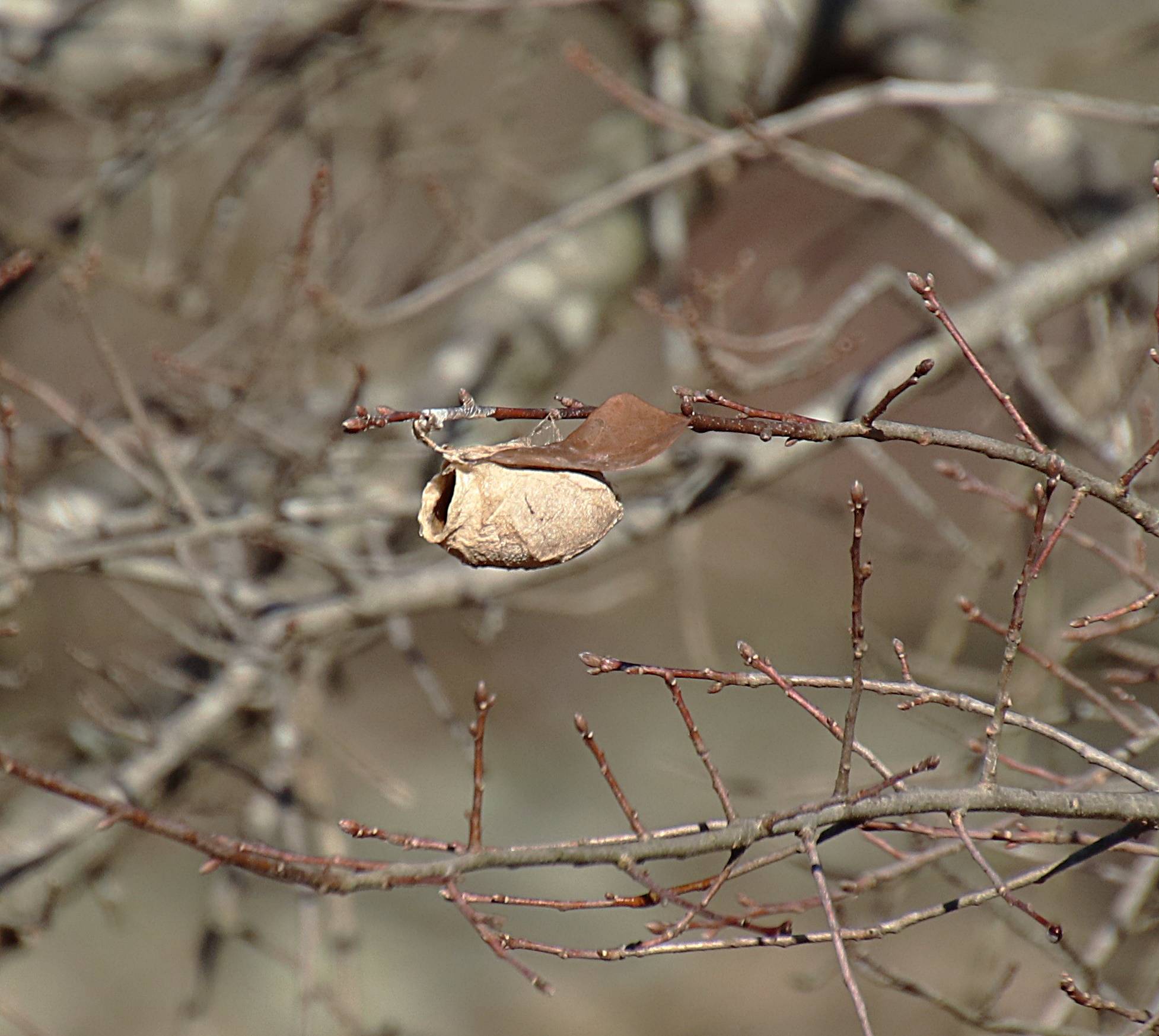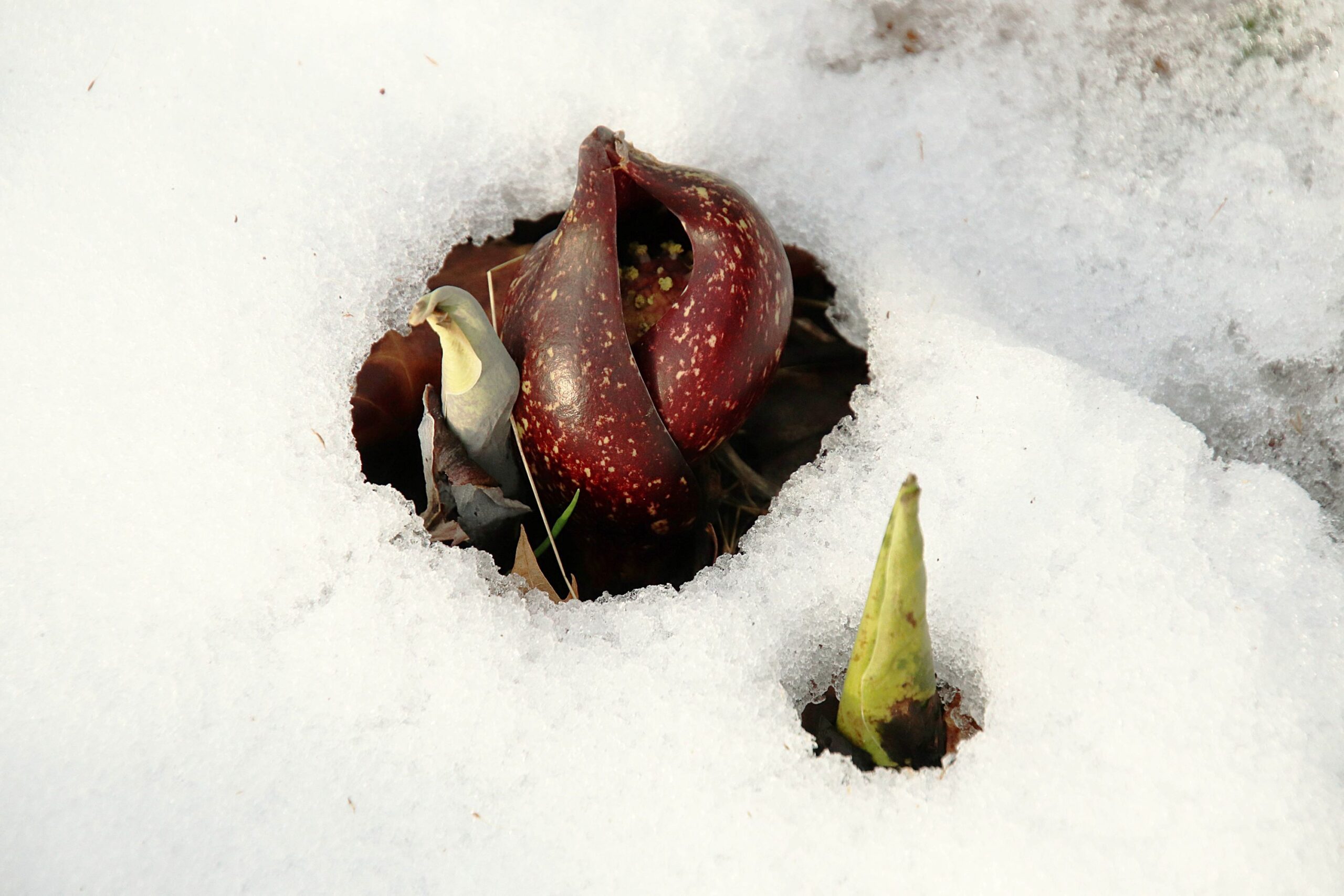
The answer to last week’s mystery is skunk cabbage, Symplocarpus foetidus, pictured in photo below.

The large spathe surrounding the spadix cabbage gets its name from the unpleasant odor it emits.
The skunk cabbage exhibits thermogenesis, or the ability to metabolically generate heat. Its spadix can generate temperatures on average 20 degrees warmer inside the spathe than the surrounding air temperature for nearly two weeks. It can also bloom while there is still snow and ice on the ground.
Skunk cabbage attracts pollinators that are drawn to rotting meat, primarily carrion-feeding flies and gnats. It is also visited by bees, beetles, and other insects, possibly because of the warmth.
Skunk cabbage has a massive root system, with roots which pulls the plant deeper into the soil each year. A few inches below the surface, a thick mat of unbranched, fibrous roots grows out in all directions from the elongated rootstock, terminating in an extensive system of fibrous rootlets. The roots and rootstock store large amounts of nutrients necessary for thermogenesis and to produce the lush foliage the following year.
Mystery Monday is sponsored by the Spy Newspapers and Adkins Arboretum.


Write a Letter to the Editor on this Article
We encourage readers to offer their point of view on this article by submitting the following form. Editing is sometimes necessary and is done at the discretion of the editorial staff.